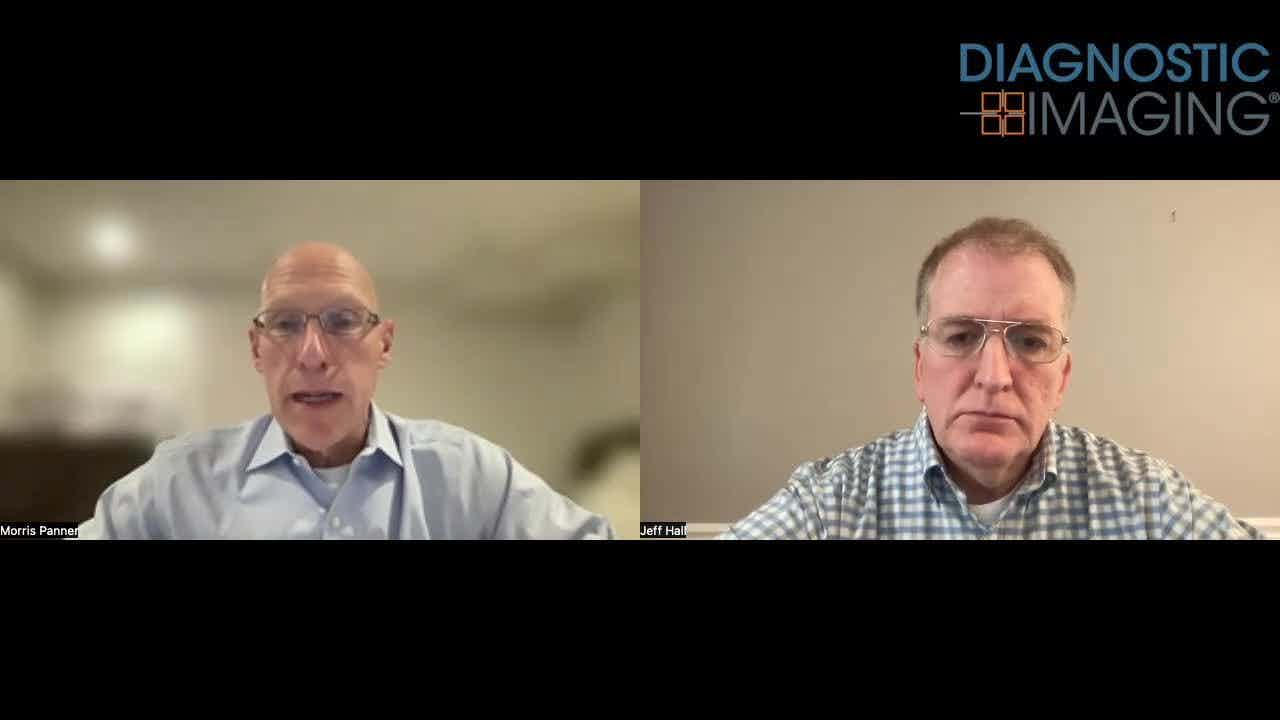Fall means open season on imaging payments
Annual release of Medicare update reveals multiple proposals affecting radiologists
Annual release of Medicare update reveals multiple proposals affecting radiologists
As summer becomes fall, one can count on certain annual events. Children returning to school, shorter and cooler days, beautiful fall colors, and weekend afternoons watching football. And, for the quirky few like me who actually enjoy reading the Federal Register, we can look forward to the annual Medicare Physician Fee Schedule (MPFS) update and related rules published by the Centers for Medicare and Medicaid Services.
On Aug. 22, CMS published its proposed MPFS for 2007. In addition to the reimbursement levels for services paid under the schedule, the proposed rules contain a number of important clarifications and revisions to Medicare's reassignment rules and its Stark regulations. Although a number of the regulatory proposals focus primarily on abusive clinical laboratory arrangements, the proposals could have a significant impact on diagnostic imaging arrangements if not narrowly applied to clinical labs when adopted. In addition, CMS has proposed new rules to govern independent diagnostic testing facilities (IDTFs).
Of particular interest to radiologists, this year's proposed rules contain an emphasis on interpretation services.
PAY REDUCTIONS
As proposed, the cut in the annual MPFS brought about by the sustainable growth rate formula will be 5.1%, absent congressional intervention. Chances appear to be good for such congressional action, however.
The CMS announcement regarding the level of its multiple procedure payment cuts for next year was unexpected good news. The 2006 MPFS rule imposed a 25% reduction in Medicare technical component payments for subsequent diagnostic imaging procedures when certain MR, CT, or ultrasound procedures are performed the same day on contiguous body parts. Although CMS had planned the multiple imaging procedure cut to be 50% beginning in 2007, it held the discount at 25% based on data it received from the American College of Radiology. The ACR successfully demonstrated to the agency's satisfaction that a 50% reduction in multiple procedure technical component payments was not justified. Hooray! Thank you, ACR.
Section 5102 of the Deficit Reduction Act also places a cap on MPFS payments, set to begin in January, for the technical component of certain imaging services. These would be paid at the lesser of the MPFS or the ambulatory payment classification (APC) rate. For imaging services that are subject to both the multiple procedure reduction and the outpatient hospital cap, CMS proposed to first apply the multiple procedure reduction and then apply the outpatient cap.
For example, if the multiple imaging payment cut results in the MPFS being less than the APC payment, the MPFS amount is used. But should the MPFS payment still exceed the APC amount even after the multiple imaging cut has been taken-no surprise-the imaging facility is limited to receiving the APC amount. The result is a lose-lose calculation designed to assure the least possible payment. Here's hoping the ACR effort to achieve a two-year moratorium on the DRA section 5102 cuts will be successful.
REASSIGNMENT RULES
In the other major area of interest in the proposed rules, the CMS focus on abusive clinical labs could also affect imaging. The agency has expressed particular concern regarding the potential for abuse of the Medicare program created by the growth of "pod," or "condo," laboratories.
"Pod" laboratories are located offsite from a physician's office (sometimes in another state) and are operated entirely by an independent contractor physician under a reassignment arrangement to perform pathology studies that are billed globally by the ordering physician's office. CMS is concerned that this arrangement may lead to unnecessary test ordering, involve kickbacks and fee splitting between the parties, and possibly result in referrals that would otherwise be prohibited under the Stark Law.
The purchased diagnostic test rule (the PDT Rule) provides that when a diagnostic test was not either (a) performed or supervised by the physician billing for the service or (b) performed or supervised by another physician who shares a practice with the billing physician, Medicare will limit payment to the lower of the cost of the purchased test or the actual charge. This is colloquially known as the anti-markup rule. But it is currently limited to technical components and does not apply to interpretation services, whether provided via reassignment or pursuant to Medicare's purchased interpretation rules.
CMS is considering amending the reassignment rules to clarify how the requirements of the PDT Rule and purchased interpretation rule apply when a physician performs professional interpretation services pursuant to a contractual reassignment arrangement.
The agency has noted that confusion exists about whether its purchased interpretation rule must be applied when interpreting physicians reassign the right to bill as the result of the authority created by section 952 of the Medicare Prescription Drug, Improvement, and Modernization Act of 2003. The answer is no. The purchased interpretation rule currently applies only in limited, narrowly defined circumstances. But that could change.
CMS is not at this time proposing a further amendment to its reassignment rules, but the agency did announce that it is considering applying all of the requirements of its purchased interpretation rule to all contractual reassignment arrangements for interpretation services.
Under the purchased interpretation rule, a diagnostic imaging provider can submit a claim for the professional component of a diagnostic test performed by another physician (whether or not the interpretation is performed physically at the provider's site) only if each of the following requirements is met:
- The entity performing the interpretation is enrolled in the Medicare program.
- The diagnostic test was ordered by a physician or medical group that is independent of (a) the person or entity that performed the technical component and (b) the physician or medical group that performed the interpretation.
- The physician performing the interpretations does not see the patient.
- The entity that bills for the professional interpretation performs the technical component of the diagnostic test.
It is primarily because of the second point above that a self-referring orthopedic, cardiology, or other group practice that owns diagnostic imaging equipment to which its physicians refer their patients cannot now make use of the purchased interpretation rule. Currently, the physician group that self-refers and bills for the interpretation service of an independent contractor radiologist must rely on reassignment to justify such billing by the referring group-and even then only when the interpreting physician reads onsite.
Consequently, this particular change to the reassignment rule could go a long way in curtailing self-referral. A physician practice that performs and bills for imaging services under the in-office ancillary services exception to the Stark Law would effectively be barred from billing for the professional component of those services performed by an independent contractor radiologist. This is because the billing physician practice would be both ordering and performing the technical component of the test.
The downside of this proposed change to the reassignment rule is its potential adverse impact on those hospital-based radiology groups that contract with independent radiologists to perform final reads via teleradiology. If CMS changed the rule as proposed, the hospital-based radiology group could be precluded from billing Medicare for professional interpretations performed by the contract radiologists supplied by the teleradiology company. This is because the hospital-based group would not satisfy the requirement that the group perform and bill for the technical component of the service under its supplier number.
It's important to emphasize that CMS has not formally moved to amend the reassignment rule to apply the purchased interpretation requirements into all reassigned interpretation services. Instead, the agency is seeking comments from the public on the concept. CMS specifically asked for comments as to whether there should be a carve-out from the purchased interpretation requirements for diagnostic radiology and related imaging tests (and thus apply the changes only to the clinical lab arrangements they have identified as abusive). The agency also asked for comments on whether it should also apply the anti-markup rule to the professional component of diagnostic tests performed through a contractual reassignment arrangement.
NEW IDTF STANDARDS
CMS has taken note of findings by the Office of Inspector General of a number of IDTFs with erroneous payments made as a result of poor documentation or a lack of medical necessity. As a result, CMS has proposed several new standards for IDTFs similar to those currently in place for suppliers of durable medical equipment, prosthetics, orthotics, and supplies. Most of the standards will not be problematic for most imaging-oriented IDTFs. But the IDTF would be required to perform diagnostic tests only on the order of the patient's referring physician. The IDTF would have to agree not to directly solicit patients through any means. CMS seems unaware that IDTFs can perform mammography, dual x-ray absorptiometry, and other screening services. This proposal is incompatible with efforts by IDTFs to make patients aware of the availability of these important services.
In addition, CMS also proposes amending the supervising physician requirements for IDTFs to limit a supervising physician to providing services to no more than three IDTF sites.
The final CMS rule will not be published until after this column goes to press. Some of its proposals may not surface until 2008, if ever. But one thing is certain. CMS has self-referral and interpretation services on its radar. This foray is unlikely to be the last time we see CMS tinker with the rules that affect the professional component of imaging services.
Mr. Greeson is a partner in the healthcare group of Reed Smith LLP in Falls Church, VA. He can be reached at 703/641-4242 or tgreeson@reedsmith.com
New Collaboration Offers Promise of Automating Prior Authorizations in Radiology with AI
March 26th 2025In addition to a variety of tools to promote radiology workflow efficiencies, the integration of the Gravity AI tools into the PowerServer RIS platform may reduce time-consuming prior authorizations to minutes for completion.
The Reading Room: Artificial Intelligence: What RSNA 2020 Offered, and What 2021 Could Bring
December 5th 2020Nina Kottler, M.D., chief medical officer of AI at Radiology Partners, discusses, during RSNA 2020, what new developments the annual meeting provided about these technologies, sessions to access, and what to expect in the coming year.










